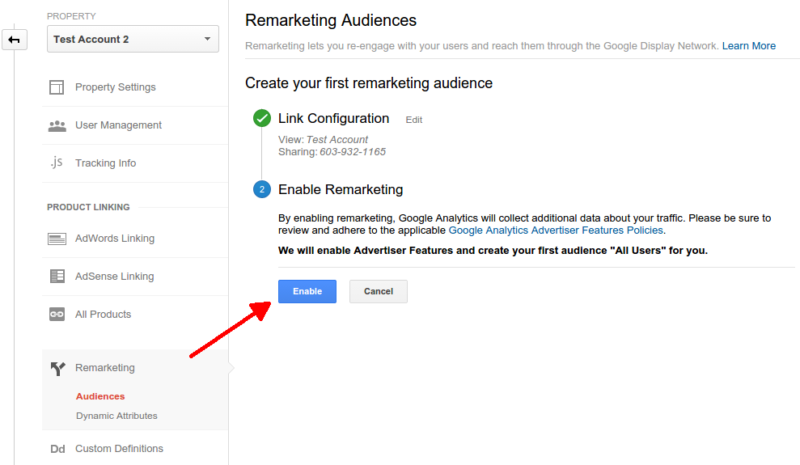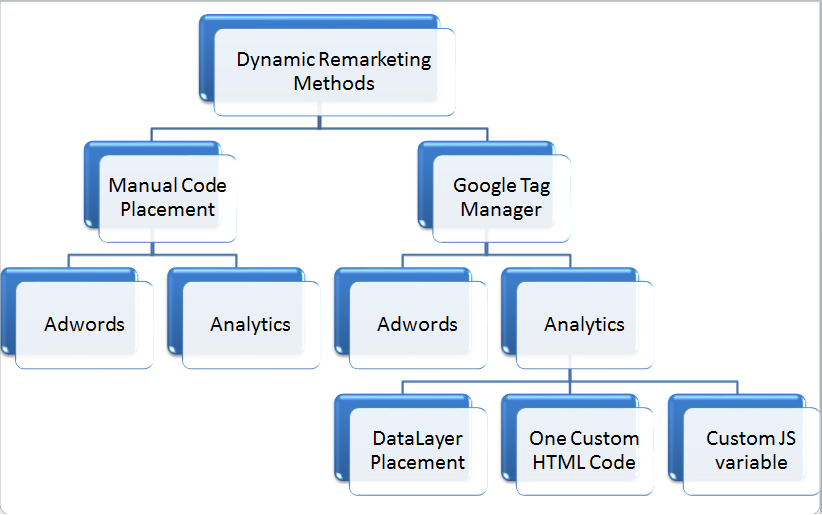Reliable Techniques for Remarketing In Google Analytics
Reliable Techniques for Remarketing In Google Analytics
Blog Article
Efficient Strategies for Remarketing in Google Analytics
In the realm of digital advertising and marketing, the world of remarketing in Google Analytics stands as a pivotal device for services aiming to boost their on-line visibility and conversion prices. Via critical target market division, tailored remarketing checklists, and appealing advertisement creatives, organizations can craft tailored campaigns that reverberate with their target audience. The true success lies in the ability to continually improve and enhance these techniques based on efficiency metrics and data understandings. By discovering the subtleties of dynamic remarketing and leveraging sophisticated monitoring tools, services can open the full possibility of their remarketing efforts, causing boosted brand name visibility and consumer engagement.
Target Market Segmentation
Utilizing target market segmentation is an essential method in maximizing the performance of remarketing projects within Google Analytics. By dividing your audience right into distinct teams based upon their actions, demographics, or passions, you can customize your advertising and marketing messages to be much more interesting and relevant. This approach enables you to supply customized ads to specific sectors, increasing the probability of conversion.

In addition, audience division aids you comprehend the varying requirements and preferences of different consumer teams, permitting you to craft even more compelling ad creatives and offers. This targeted technique not only improves the effectiveness of your remarketing efforts yet likewise improves general campaign performance.
Setting Up Remarketing Lists
To successfully apply remarketing techniques in Google Analytics, the preliminary action involves producing targeted remarketing listings based on details target market communications. Establishing up remarketing checklists enables marketing professionals to sector their site visitors into various classifications based upon their actions, such as pages watched, products looked for, or activities handled the site. By defining these sectors, marketing professionals can then develop personalized and pertinent ads that target these details groups, raising the probability of conversion.
Remarketing lists can be established up using numerous criteria such as web page brows through, duration of visit, certain goal completions, and even specific events caused on the site. This degree of personalization makes it possible for marketing experts to tailor their promotions to match the interests and choices of each segmented target market, leading to greater engagement and conversion rates.
Furthermore, remarketing lists can additionally be developed based on data imported from various other resources like CRM systems, permitting even more exact targeting. By establishing these targeted remarketing checklists, marketing professionals can properly connect to potential consumers who have actually already shown interest in their services or products, maximizing the influence of their remarketing campaigns.
Creating Compelling Ad Creatives
After segmenting web site site visitors into targeted remarketing lists based on particular audience interactions, the next important action is to craft engaging ad creatives that resonate with each fractional team's passions and choices. The effectiveness of remarketing projects greatly depends on the capacity of these advertisement creatives to record the interest of the audience and drive them to take the desired action.
To develop look what i found engaging advertisement creatives, it is essential to understand the unique characteristics of each segmented group (What Is “Remarketing” In Google Analytics?). Customizing the messaging, visuals, and uses to line up with the passions and preferences of the audience can substantially enhance the possibilities of conversion. Making use of vibrant ads that instantly adjust web content based on the customer's habits can likewise improve the personalization of the ad experience

Tracking Performance and Optimization
Efficient monitoring of campaign performance and continuous optimization are critical elements of successful remarketing techniques in Google Analytics. To ensure the performance of remarketing campaigns, marketing experts should routinely track vital performance metrics such as click-through prices, conversion prices, and return on advertisement spend. By keeping track of these metrics, marketing professionals can acquire useful insights into the efficiency of their projects and recognize locations for improvement.
In Google Analytics, online marketers can utilize devices like conversion tracking and target market division to evaluate the efficiency of their remarketing campaigns. Conversion monitoring allows marketing professionals to track certain actions that customers take after clicking on a remarketing advertisement, offering beneficial data on the efficiency of the project in driving preferred outcomes. Target market segmentation, on the other hand, makes it possible for online marketers to divide their target market right into various sections based on various standards such as demographics, behavior, and interests, enabling more targeted and personalized remarketing efforts.
Constant optimization is necessary for maximizing the influence of remarketing projects. Marketers must utilize A/B screening to explore different advertisement creatives, messaging, and targeting methods to recognize one of the most reliable methods. By regularly analyzing project performance data and making data-driven optimizations, marketers can guarantee that their remarketing projects are attaining the desired outcomes and driving conversions successfully.
Leveraging Dynamic Remarketing
Making use of dynamic remarketing can considerably boost the importance and effect of targeted advertisements check my blog in Google Analytics. This advanced technique allows marketers to show tailored ads to users that have actually formerly visited their internet site or utilized their mobile app. By dynamically showing items or solutions that the individuals have revealed interest in, dynamic remarketing aids to keep the brand fresh in their minds and motivates them to return to finish an acquisition.

Moreover, dynamic remarketing projects can be automated and maximized in real-time based upon performance information, making certain that the ads continue to be appropriate and efficient. By leveraging dynamic remarketing in Google Analytics, advertisers can create extra impactful and targeted marketing campaigns that resonate with their audience and drive results.
Conclusion
Finally, efficient remarketing approaches in Google Analytics involve audience segmentation, targeted remarketing lists, compelling advertisement creatives, efficiency tracking, and dynamic remarketing. By focusing on customized advertisements, information evaluation, and continual optimization, businesses can increase conversion rates and drive engagement successfully. Leveraging tools like conversion tracking ensures that advertisements continue to be relevant and personalized, leading to overall success in remarketing initiatives.
Through strategic audience division, customized remarketing listings, and appealing ad creatives, businesses can craft personalized projects that reverberate with their target audience. Using dynamic advertisements that instantly change content based on the user's actions can likewise enhance the personalization of the advertisement experience.
Conversion tracking allows online marketers to track particular activities that individuals take after clicking on a remarketing ad, providing beneficial information on the efficiency of the campaign in driving preferred results.Utilizing vibrant remarketing can dramatically enhance the relevance and impact of targeted advertisements in Google Analytics - What Is “Remarketing” In Google Analytics?.In final thought, reliable remarketing methods in Google Analytics involve target market segmentation, targeted remarketing checklists, compelling advertisement creatives, performance surveillance, and dynamic remarketing
Report this page